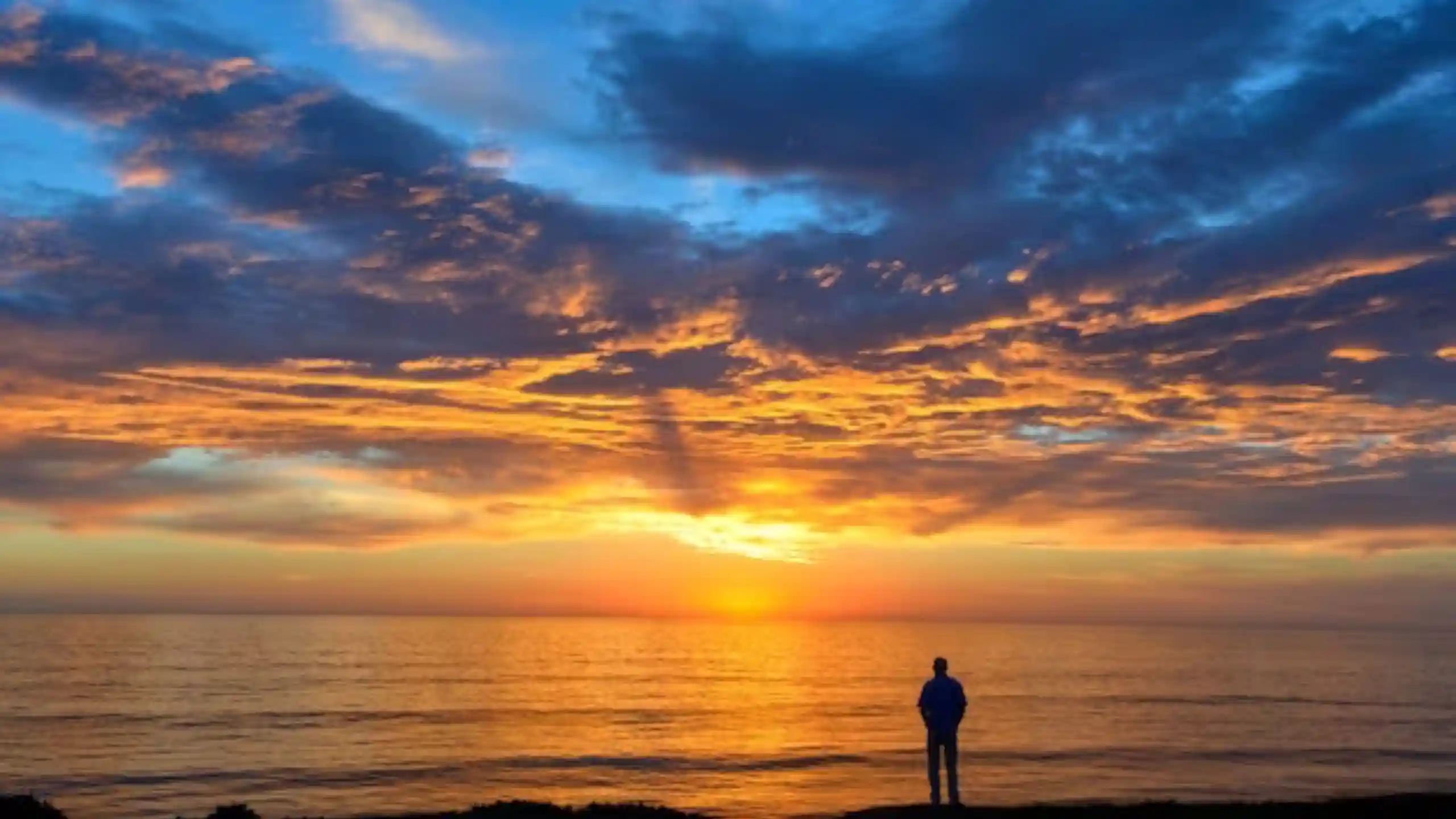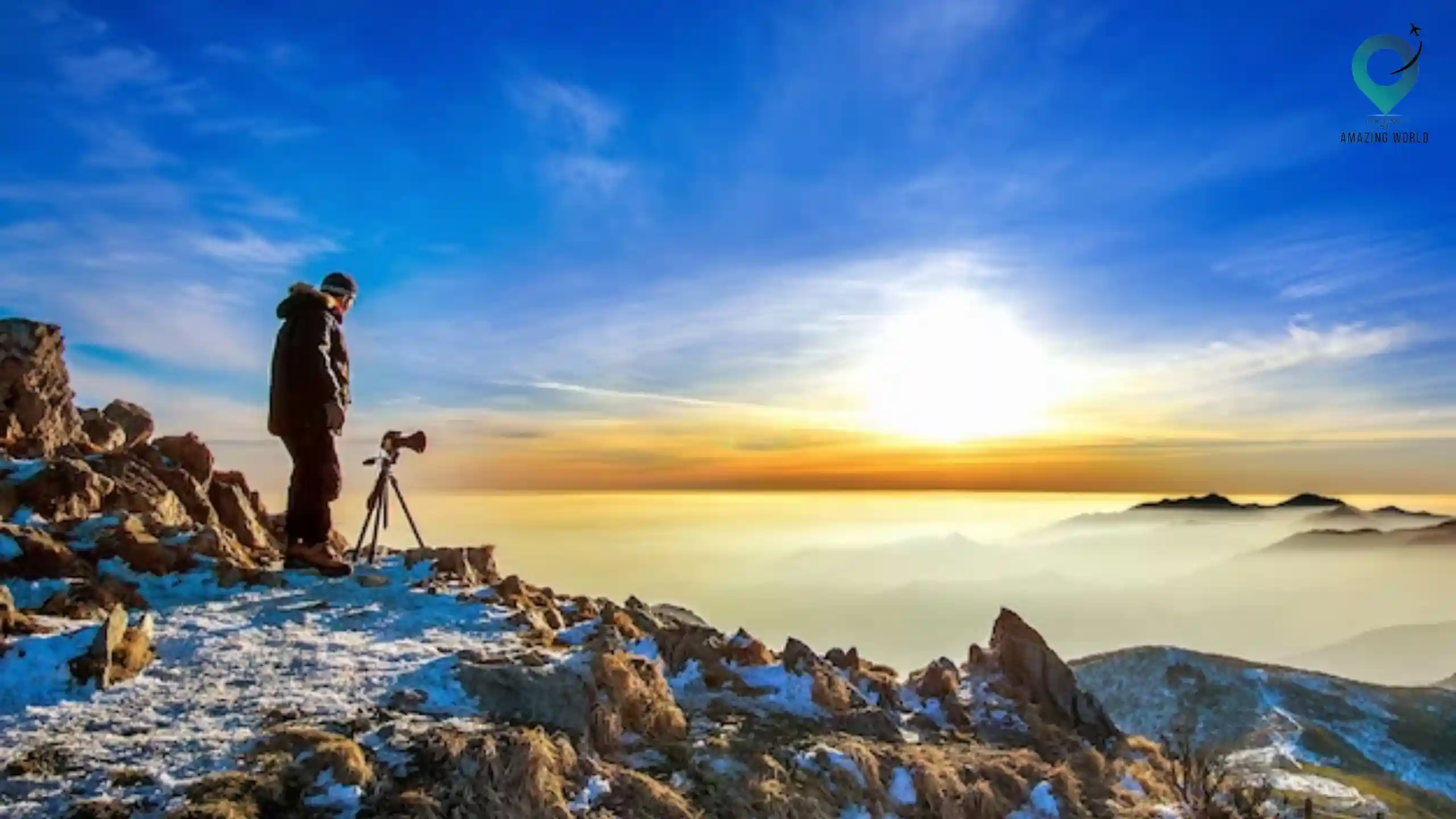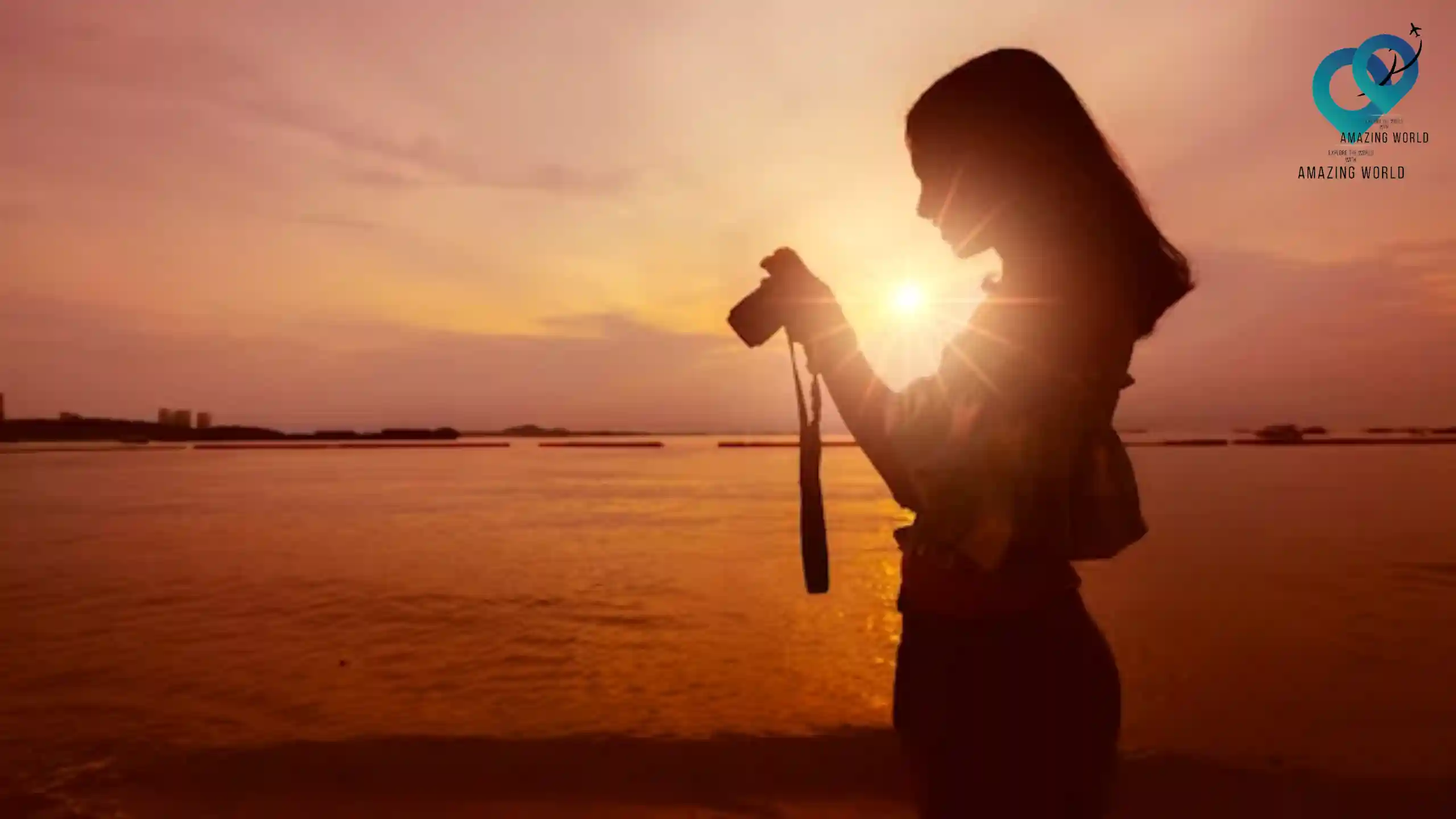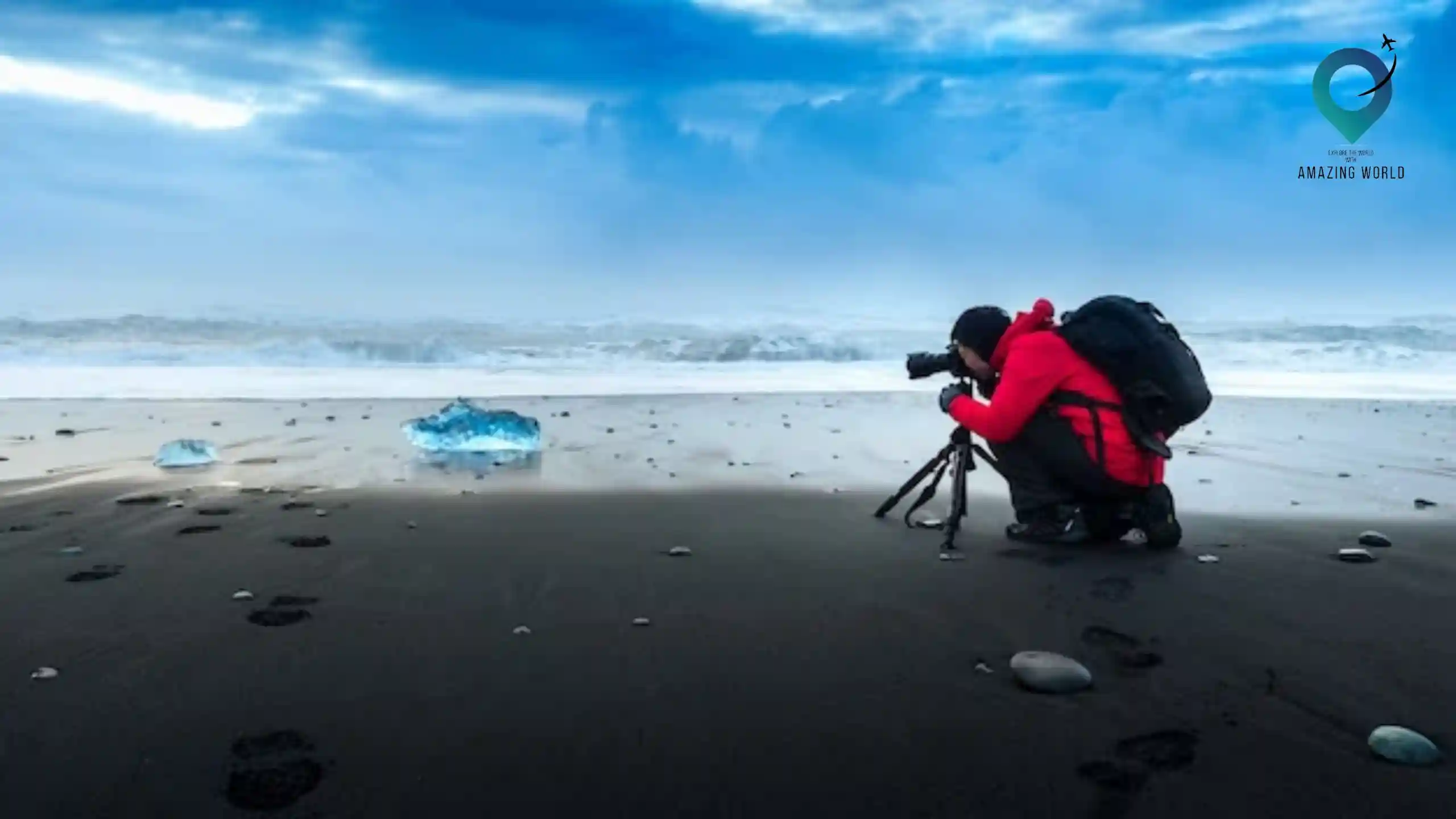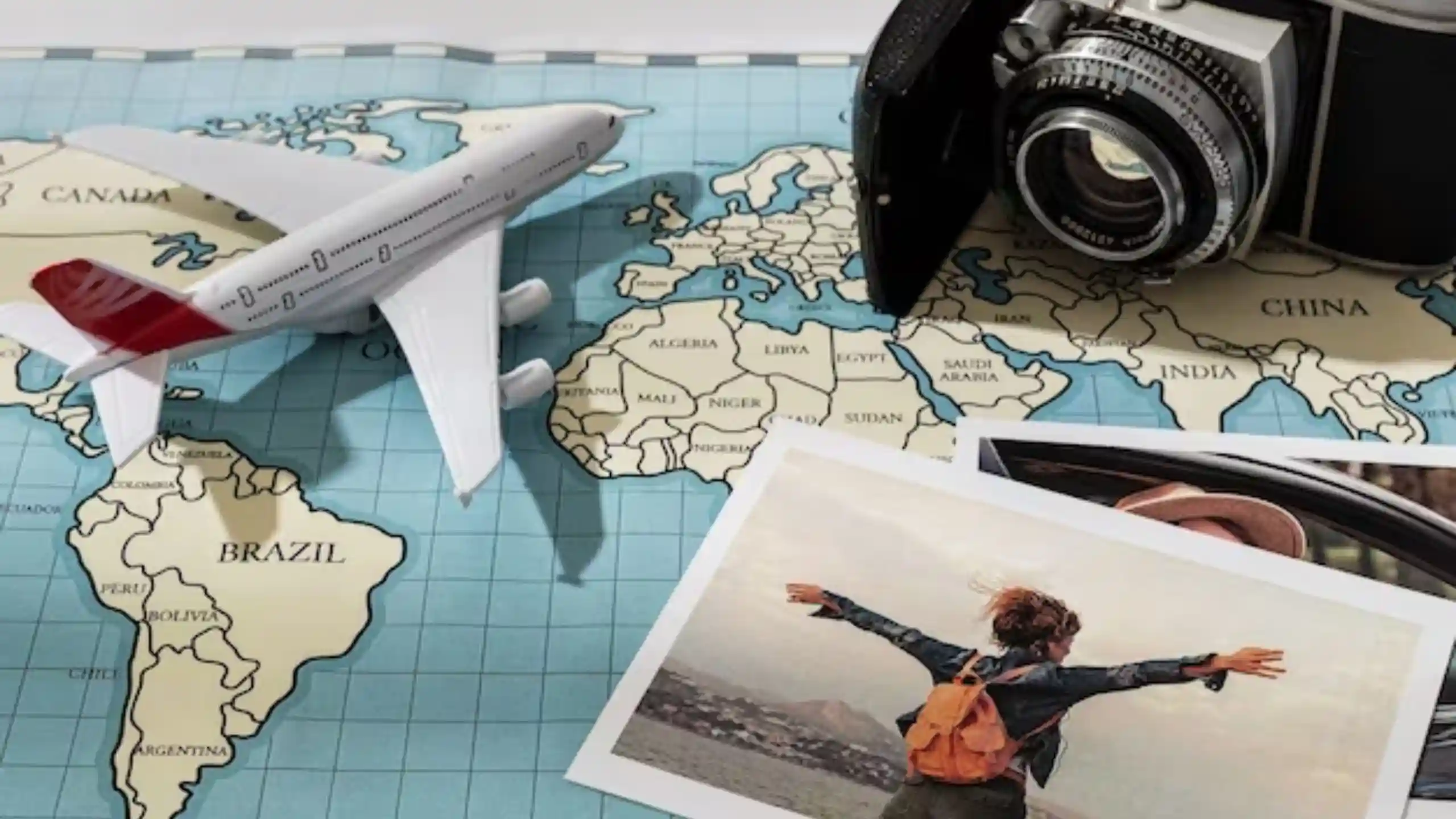Sunset Photography: Expert Tips for Capturing Evening Sunset Shots
Table of Contents
Toggle
Embarking on a journey to capture the breathtaking allure of sunsets through the lens of your camera is an endeavor that marries technical precision with creative intuition. As the sun gracefully dips below the horizon, it paints the sky with a palette of warm, captivating colors that dance against the fading light. Welcome to the world of sunset photography, where the interplay of vibrant hues and serene landscapes beckons both seasoned photographers and budding enthusiasts alike.
In this immersive guide, we’ll delve deep into the art of mastering sunset photography, equipping you with expert insights and practical techniques to ensure your images are imbued with the essence of this magical hour. From understanding the fundamental concepts that underpin successful sunset captures to uncovering the secrets behind evocative storytelling, this journey promises to elevate your photography skills to new heights.
Our exploration will encompass a plethora of vital aspects, ranging from selecting the ideal equipment and planning meticulously for the optimal lighting conditions to mastering the intricate nuances of composition and camera settings. We’ll reveal the art of harnessing the power of golden hour illumination and offer you invaluable post-processing tips to make your sunset images truly shine.
Understanding Sunset Photography Basics
Sunset photography is a captivating genre that requires a solid grasp of the fundamentals to create stunning and evocative images. As the sun sets, the changing light and colors provide a unique canvas for photographers to capture moments of tranquility and beauty. Here’s a comprehensive breakdown of the key basics to consider:
- Golden Hour and Lighting: The golden hour, the period shortly before sunset or after sunrise, is characterized by soft and warm lighting. This lighting casts a magical glow, creating a serene and enchanting atmosphere that lends itself perfectly to sunset photography. The warm hues of this light bring out rich and vibrant colors, adding depth and emotion to your images.
- Dynamic Range: Sunsets often present a challenging dynamic range, with the bright sun and dark foreground elements. Understanding how to manage this dynamic range is crucial to ensure both the sky and the landscape are properly exposed. Techniques like bracketing or using graduated filters can help achieve balanced exposures.
- Color Palette and Mood: Sunsets offer a diverse range of colors and moods as the sun moves lower in the sky. From fiery oranges and reds to soft pinks and purples, each sunset is a unique spectacle. Pay attention to how these colors interact with the landscape and contribute to the mood and emotional impact of your photographs.
- Composition and Elements: While technical aspects are important, composition plays a significant role in creating compelling sunset shots. Elements such as leading lines, symmetry, and framing can guide the viewer’s eye and enhance the overall aesthetics of your images.
- Patience and Timing: Beyond the technical settings, mastering sunset photography requires patience and timing. Arriving early at your chosen location allows you to observe changing light conditions and anticipate the optimal moment to capture the perfect shot.
Sunset photography basics encompass a blend of technical knowledge and creative intuition. By understanding the unique characteristics of sunset light and its impact on colors, mood, and composition, you’ll be well-equipped to create captivating sunset images that evoke emotion and resonate with viewers.
What is the secret to photographing the sunset?
Photographing the sunset can be a captivating and rewarding experience. While there’s no one-size-fits-all secret, there are several tips and techniques that can help you capture stunning sunset photos:
Timing is Key: The “golden hour,” which occurs shortly after sunrise and before sunset, offers soft, warm lighting that enhances the beauty of the scene. Arrive early to set up your equipment and choose your composition.
Scout Locations: Choose a location with an interesting foreground that can add depth and context to your sunset photo. This could include elements like trees, buildings, rocks, or bodies of water.
Use a Tripod: As the light diminishes during sunset, your camera will need longer exposure times. A tripod helps keep your camera steady, preventing blurry photos.
Choose the Right Settings:
-
- Aperture (f-stop): A wide aperture (low f-stop number) like f/2.8 or f/4 will create a shallow depth of field and allow for a more pronounced background blur.
- Shutter Speed: Use a slower shutter speed for longer exposures that capture the vibrant colors and movement of the sky. A tripod is essential for this to avoid camera shake.
- ISO: Keep the ISO as low as possible to reduce noise. Start with ISO 100 or 200 and adjust if needed.
Manual Mode: Shooting in manual mode gives you full control over your camera settings. Experiment with different combinations of aperture, shutter speed, and ISO to achieve your desired look.
Composition Rules: Apply basic composition principles like the rule of thirds, leading lines, and framing to create visually pleasing sunset photos.
Bracketing: Sunset scenes can have a wide range of bright and dark areas. Bracketing involves taking multiple shots at different exposures to capture the full dynamic range, which can then be blended in post-processing.
Filters: Graduated neutral density filters can help balance the exposure between the bright sky and darker foreground. A polarizing filter can also enhance the colors and reduce reflections.
Focus Carefully: Ensure your foreground and background are in focus. You can use manual focus, autofocus, or focus stacking for complex scenes.
Shoot in RAW: RAW format retains more image information and provides greater flexibility during post-processing, especially for adjusting exposure and colors.
Experiment with Silhouettes: Use the strong backlight during sunset to create striking silhouettes of subjects against the colorful sky.
Post-Processing: Use photo editing software to enhance your sunset photos. Adjust exposure, contrast, saturation, and color balance to bring out the best in your image.
Patience and Observation: Sometimes the most stunning sunset moments occur after the sun has already dipped below the horizon. Stay patient and observant to capture these fleeting moments.
Remember that every sunset is unique, and experimenting with different techniques and settings will help you find your personal style for capturing the beauty of this natural phenomenon.
Essential Equipment for Sunset Photography
To embark on your journey into sunset photography, having the right equipment is essential. The gear you choose can greatly influence the quality of your images and your overall experience. Here’s a breakdown of the essential equipment you should consider:
Camera: While any camera can capture sunsets, using a camera with manual controls allows you to have greater creative control over your shots. This includes DSLRs, mirrorless cameras, and even smartphones with manual modes.
Lenses: The choice of lenses plays a significant role in your sunset photography. Consider these options:
- Wide-Angle Lenses: Ideal for capturing expansive landscapes and dramatic skies during sunset. They allow you to include the colorful sky and interesting foreground elements in your frame.
- Telephoto Lenses: These lenses are great for zooming in on specific details, such as the sun itself or a distant subject against the sunset backdrop.
- Prime Lenses: Primes offer exceptional image quality and wider apertures, allowing for creative exploration and beautiful bokeh.
Tripod: A sturdy tripod is invaluable for sunset photography; especially as light levels decrease. It ensures stability and eliminates camera shake, allowing for longer exposures without blur.
Filters: Filters can enhance your sunset shots:
- Polarizing Filters: Reduce reflections and increase color saturation, making the colors in the sky and landscape more vibrant.
- Neutral Density (ND) Filters: These filters reduce the amount of light entering the camera, allowing for longer exposures even in bright conditions. This can create dreamy effects in the sky and water.
Remote Shutter Release: A remote shutter release or cable release prevents camera shake when taking long-exposure shots, ensuring crisp and sharp images.
Having the right equipment gives you the tools to fully explore the creative possibilities of sunset photography. Whether you’re using a smartphone or a professional camera setup, understanding how each piece of equipment contributes to your shots will help you make the most of every sunset opportunity.
Planning Your Sunset Photography Session
Planning is key to capturing stunning sunset shots that convey the beauty and emotions of the moment. By preparing ahead of time, you can maximize your chances of capturing the perfect shot. Here’s how to plan your sunset photography session effectively:
- Scouting Locations: Research and scout potential locations before the actual shoot. Look for spots with interesting foreground elements, such as mountains, water bodies, or cityscapes, that can complement the sunset sky.
- Checking Weather Conditions: Weather plays a crucial role in sunset photography. Clouds and atmospheric conditions can greatly impact the quality of light and the colors in the sky. Use weather apps to track cloud cover and atmospheric conditions for the day.
- Golden Hour Timing: Determine the timing of the golden hour—the period just before sunset—when the light is soft and warm. Arriving early allows you to set up your gear, compose your shots, and observe the changing light conditions.
- Foreground Elements: Incorporate foreground elements to add depth and context to your images. Rocks, trees, or even people can serve as compelling foreground subjects that lead the viewer’s eye into the photograph.
- Backup Plans: While you may have a specific location in mind, be prepared with backup locations in case conditions aren’t ideal. Flexibility is key in landscape photography, and having alternatives ensures you can still capture stunning shots.
By meticulously planning your sunset photography session, you set yourself up for success. A well-chosen location, attention to weather conditions, and a deep understanding of the timing of the golden hour can significantly enhance your chances of capturing breathtaking sunset moments.
Mastering Composition Techniques
Composition is a powerful tool that can transform a good sunset photo into a breathtaking masterpiece. By understanding and applying composition techniques, you can create visually appealing and emotionally engaging images:
- Rule of Thirds: Divide your frame into a grid of nine equal sections using two horizontal and two vertical lines. Position key elements along these lines or at their intersections to create a balanced and visually pleasing composition.
- Leading Lines: Utilize lines in your composition, such as roads, shorelines, or trees, to guide the viewer’s eye toward the focal point or the sunset itself.
- Foreground Elements: Incorporate interesting foreground elements to add depth and context to your images. A well-placed rock, flower, or person in the foreground can create a sense of scale and draw the viewer into the scene.
- Framing: Use natural elements in your scene, such as trees or archways, to frame the sunset. Framing adds a sense of depth and focus to your image.
- Symmetry and Patterns: Seek out symmetrical scenes or patterns in nature to create a sense of balance and order in your composition.
Best Camera Settings for Sunset Photography
Understanding camera settings is essential to capturing the true beauty of sunsets:
- Adjusting Aperture: Choose a moderate aperture (between f/8 and f/16) to ensure both foreground and background elements are in focus. This allows you to capture the full depth of the scene.
- Managing Shutter Speed: Use a slower shutter speed to allow for proper exposure as light diminishes during sunset. However, be cautious not to go too slow without a tripod to prevent camera shake.
- Optimizing ISO: Begin with a low ISO setting to maintain image quality and reduce noise. Gradually increase it if needed as light decreases, but be mindful of noise levels.
- Using Exposure Compensation: Adjust exposure compensation to account for the bright sunset. Experiment with -1 to -2 stops to avoid overexposing the sky.
Playing with Exposure and Settings
Experimenting with exposure settings can lead to creative results:
- Adjusting Shutter Speed: Varying the shutter speed can create different effects. A slower shutter speed (long exposure) can create a dreamy, soft appearance in water or clouds, while a faster shutter speed can capture sharp details.
- Balancing Aperture and ISO: Depending on the effect you want, balancing a wider aperture with a higher ISO can allow for faster shutter speeds in low light conditions.
Capturing the Sun and Silhouettes
Creating striking images of the sun and captivating silhouettes requires a thoughtful approach:
- Capturing the Sun: Safely capturing the sun itself involves using a smaller aperture to prevent excessive brightness and lens flares. Position the sun near the edge of the frame for a more balanced composition.
- Creating Silhouettes: Use the vibrant colors of the sunset sky as a backdrop to create silhouettes. Position subjects against the colorful sky to create a dramatic contrast.
Post-Processing and Enhancements
Post-processing is the final step in bringing out the full potential of your sunset shots:
- Color Enhancement: Adjust the saturation and vibrancy of colors to bring out the warmth and beauty of sunset hues without oversaturating.
- Dynamic Range Balancing: Use editing tools to balance the contrast and dynamic range of your image. This ensures that both bright and shadowed areas maintain detail.
- Lens Flare and Glare Correction: Address lens flares and glare that may occur due to shooting directly into the sun. Use editing tools to reduce or remove them for a cleaner image.
Showcasing Your Sunset Photography
Sharing your work allows you to connect with others who appreciate the beauty of sunsets:
- Online Portfolios: Create a dedicated online portfolio to showcase your best sunset shots. Organize them by themes, locations, or styles to create a visually appealing presentation.
- Social Media Platforms: Utilize platforms like Instagram, Facebook, and photography communities to share your work with a wider audience. Engage with fellow photographers and enthusiasts by using relevant hashtags and descriptions.
- Feedback and Interaction: Encourage engagement with your audience by inviting comments, likes, and shares. Constructive feedback from the photography community can offer valuable insights to refine your skills.
Conclusion
In the realm of photography, capturing the enchanting beauty of sunsets goes beyond technical settings. It’s an art that combines technical knowledge with creative vision. As you’ve discovered in this article, the magic of sunset photography lies in the interplay of light, emotion, and storytelling. Whether you’re a seasoned photographer or a passionate beginner, the allure of sunsets provides endless opportunities for exploration and self-expression.
Throughout this journey, you’ve gained insights into understanding the basics of sunset photography, unlocking the secrets to capturing the essence of the moment, and honing your skills with the right equipment and composition techniques. You’ve learned how to master camera settings and utilize exposure to your advantage. You’ve discovered the art of creating silhouettes and capturing the sun itself, all while enhancing your images through post-processing.
How much did you like Our detailed Mastering Cinematic Travel Videography: 15 Tips to Create Stunning Travel Videos? Review Also, please share these Blogs with your friends on social media.
Related Article –
Sunset Photography FAQ’s
Can I use a smartphone for sunset photography?
A smartphone with manual controls can yield impressive results. Experiment with settings and utilize editing apps to enhance your images.
What is the “golden hour,” and why is it important?
The golden hour refers to the period shortly before sunset or after sunrise when the light is soft, warm, and diffused. It enhances colors and textures, making it ideal for capturing captivating shots.
How do I avoid overexposing the sun itself?
Use a small aperture (high f-number) to reduce the amount of light entering the camera. Additionally, consider using filters to control the intensity of the sunlight.
What’s the best way to capture reflections in water during sunset?
Position yourself so that the water body reflects the colorful sky. Calm water surfaces work best for clear reflections.
Is post-processing necessary for sunset photography?
While post-processing isn’t mandatory, it can enhance the visual impact of your images. Adjustments to color balance, contrast, and exposure can bring out the best in your sunset shots.

Meet David Hoper, a passionate travel Blog writer with 7+ years of experience in travel content. Through his exemplary storytelling and engaging narratives, he shares his experiences and brings destinations to life. With a keen eye for detail and a love for exploration, he has cultivated a diverse portfolio of travel blogs that inspire and inform readers worldwide.
